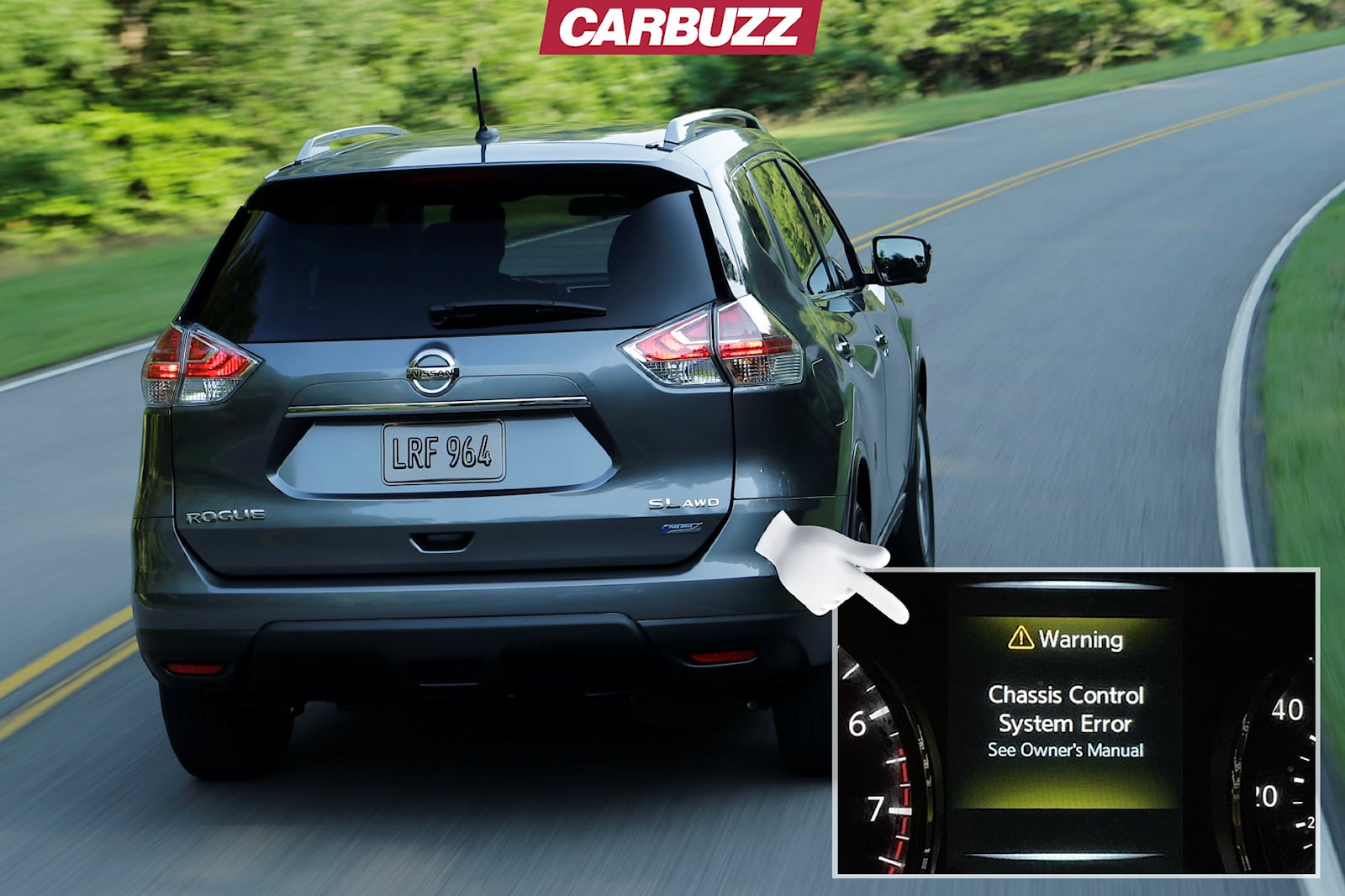You may have encountered a "Chassis Control System Error'' in the instrument cluster of your second-generation Nissan Rogue, and those words on the driver's information display look ominous indeed. Relax, it's not so bad. This warning seldom announces a serious issue, and a fault with this system is usually fairly easy and inexpensive to rectify.
Think of the Nissan Rogue's Chassis Control as a stability control system that went to finishing school. It aims to smooth out the Rogue's ride quality, not by adjusting the damper rates or air spring height, but by playing around with the brakes and torque distribution. This system debuted in the second-generation (T32) Rogue, which first arrived in the US in 2013. It remained in use until the end of this vehicle's entire production run in 2020, so problems may surface on 2014, 2015, 2016, 2017, 2018, and 2019 models as well - all second-generation Rogues could be affected.
The Nissan Rogue's Chassis Control System uses old-fashioned steel springs, so there is no compressor or suspension airbag in sight. Instead, it uses clever mathematics to control the suspension's bump stiffness by manipulating the speed at which the normal nitrogen-filled dampers are allowed to move using judicious brake applications.
The science and suspension geometry behind this system falls outside the scope of this article, but the simplified takeaway is that the Chassis Control System extends the stability control system's ability via the use of individual wheel braking to manage up-and-down wheel movement independently. Along with the now-traditional stability control and torque-vectoring systems, the Nissan Rogue Chassis Control System uses brakes to modify a car's dynamic behavior to new levels.
So what is a chassis control error on your Nissan Rogue, and how can you tell what the cause is? This error message in the driver's information display will usually appear along with some illuminated warning light in the instrument cluster because any malfunction of the drivetrain or issues with the braking- or emission control system will deactivate the Chassis Control as well.
This is due to the fact that the Chassis Control system relies on the braking system, engine, transmission, and AWD system to perform its function, meaning that a malfunction in any of those inputs or outputs will render the system inoperable. Finding out why your Nissan Rogue gives a chassis control system error warning will thus entail finding out what's wrong with the Rogue's other control systems.
The effects of problems with the Chassis Control System can vary, but will include the following symptoms:
If this has caught you off guard and you're wondering why your Nissan Rogue says "Chassis Control Error" and what you should do about it - don't panic. Your only course of action would be to perform a detailed diagnostic scan of all the Rogue's control systems via the OBD-II system to determine which part of the system isn't performing as required. Armed with this information, you'll be able to pin-point the defect and rectify it accordingly.
If you're wondering how to turn your Nissan Rogue's Chassis Control System on or off, the answer is that you can't. This is a fully-automated system which is on by default, and will only turn itself off if it senses a problem with one of its sub-systems.
Unless there's a fatal defect with the engine or transmission, your Nissan Rogue will be able to keep moving on its own power, even if the Chassis Control System is disabled. You can gently drive it home or to a workshop, but bear in mind that the car's dynamic behavior will be adversely affected, so be alert to anomalies in the driving experience. Seeing as this issue is usually caused by something related to the ABS, remember that you won't have any traction- or stability control assistance while driving, and the brakes will be prone to locking up on loose surfaces.
Most of the reports regarding defects of the Nissan Rogue Chassis Control System have been resolved quite easily. Owners report following these steps:
An OEM replacement wheel speed sensor will cost between $230 and $310, depending on the specific sensor, which is rather pricey. Aftermarket replacement sensors from reputable suppliers can be had for as little as $90, though, so check out the internet for a suitable replacement instead. Fitting a wheel speed sensor is easy enough to do at home, but count on about an hour's worth of labor (between $100 and $150) if a professional were to replace it for you.
 CarBuzz
CarBuzz